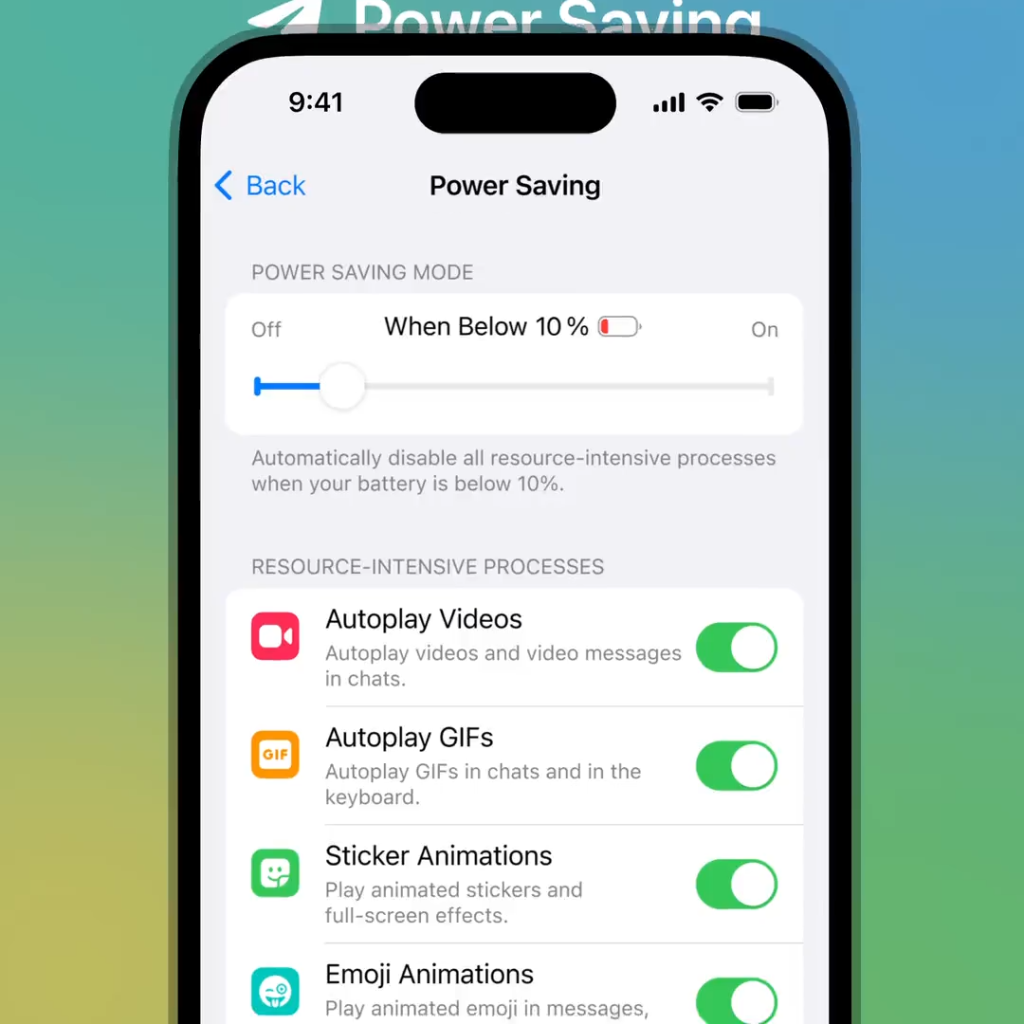
Yes, fake versions of Trust Wallet can exist. Always download from official sources to ensure authenticity.
Identifying Legitimate Trust Wallet
Official Sources
To ensure you are using the legitimate Trust Wallet, it is crucial to download the app from official sources. Trust Wallet has specific platforms and websites where you can securely download the authentic app.
- Trust Wallet Website: The official Trust Wallet website (trustwallet.com) is the safest place to download the app. The website provides direct links to the app on various platforms and offers the latest APK file for Android users who cannot access the Google Play Store.
- Binance Website: As Trust Wallet is owned by Binance, the official Binance website (binance.com) also provides verified links to download Trust Wallet. Binance’s endorsement ensures the app’s authenticity.
- Social Media Channels: Trust Wallet’s official social media accounts, such as Twitter (@TrustWalletApp) and Telegram, often share updates and direct links to download the app. Ensure the accounts are verified with blue checkmarks to confirm their authenticity.
- Community Forums: Trust Wallet has a presence on various cryptocurrency forums and platforms like Reddit. Official announcements and download links are often posted in these communities, but always verify the links through the official website.
Verified App Stores
Downloading Trust Wallet from verified app stores is another way to ensure the app’s legitimacy. Trust Wallet is available on both major mobile operating systems, and using the official app stores guarantees you are getting the genuine app.
- Google Play Store: For Android users, the Google Play Store is the primary and safest source to download Trust Wallet. Search for “Trust Wallet” and look for the app developed by “DApps Platform Inc.” Ensure the app has high ratings and numerous reviews to confirm its legitimacy.
- Direct Link: Use the link provided on the official Trust Wallet website to access the app on the Google Play Store directly.
- Permissions Check: Review the app permissions before installation. The legitimate Trust Wallet app will request standard permissions related to security and functionality.
- Apple App Store: For iOS users, the Apple App Store is the official and secure place to download Trust Wallet. Search for “Trust Wallet” and check that the app is provided by “DApps Platform Inc.”
- Direct Link: Access the app via the link from the official Trust Wallet website to ensure you are directed to the correct app.
- App Store Ratings: Check the app’s ratings and reviews. A legitimate app will have a high number of positive reviews and high ratings.

Common Signs of Fake Wallets
Suspicious URLs
One of the most common signs of a fake wallet is a suspicious URL. Scammers often create websites that look similar to the official Trust Wallet site to deceive users into downloading fake apps or entering sensitive information.
- Misspellings and Typos: Fake websites often have URLs that closely resemble the official URL but with slight misspellings or extra characters. For example, instead of
trustwallet.com, a fake site might usetrustwallett.comortrstwallet.com. - Unusual Domain Extensions: Official Trust Wallet URLs typically use standard domain extensions like
.com. Be wary of sites with unusual or uncommon domain extensions such as.xyz,.club, or.info. - Lack of HTTPS: Legitimate sites use HTTPS to secure data transmission. Look for a padlock icon in the browser’s address bar and ensure the URL begins with
https://. Fake sites often lack this encryption, making them less secure. - Unfamiliar Links: Avoid clicking on links from unverified sources, such as unsolicited emails or social media messages. Always navigate to Trust Wallet’s official site directly by typing the URL into your browser.
Poor App Ratings
Another indicator of a fake wallet is poor app ratings and reviews on app stores. Genuine apps like Trust Wallet typically have high ratings and numerous positive reviews.
- Low Star Ratings: Fake apps often have low star ratings. Check the app’s overall rating on the Google Play Store or Apple App Store. A legitimate Trust Wallet app will generally have a rating above 4 stars.
- Negative Reviews: Read through the reviews carefully. Fake apps often have numerous negative reviews mentioning issues like scams, lost funds, or poor functionality. Users frequently report these problems in their reviews.
- Few Reviews: A low number of reviews can also be a red flag. Legitimate apps usually have thousands of reviews due to their wide user base. An app with very few reviews might be a new and untrustworthy imitation.
- Inconsistent Feedback: Look for consistency in the feedback. Legitimate apps will have a mix of detailed reviews, while fake apps might have generic or repetitive comments that seem suspicious.
How to Verify:
- Developer Information: Check the developer information listed in the app store. The official Trust Wallet app is developed by “DApps Platform Inc.” Verify that this information matches.
- Screenshots and Descriptions: Compare the app’s screenshots and descriptions with those on the official Trust Wallet website. Discrepancies can indicate a fake app.
Risks of Using Fake Wallets
Loss of Funds
One of the most significant risks associated with using fake wallets is the potential loss of funds. Fake wallets are often designed to steal cryptocurrencies from unsuspecting users.
- Unauthorized Transactions: Fake wallets can initiate unauthorized transactions, transferring your cryptocurrencies to the attacker’s address. Once transferred, these funds are nearly impossible to recover due to the irreversible nature of blockchain transactions.
- Zero Balance: After depositing funds into a fake wallet, users might find their balance at zero without any record of a transaction. This usually means the wallet has diverted the funds to the scammer’s address immediately upon deposit.
- Delayed Theft: Some fake wallets operate subtly by allowing users to store and manage their funds temporarily. The scammer might wait until a substantial amount is accumulated before transferring the funds out, making it harder to trace the theft.
- Fake Transaction History: To maintain the illusion of legitimacy, fake wallets might display a false transaction history, misleading users into believing their funds are safe while the actual balance has been siphoned off.
Data Theft
Using fake wallets can also lead to the theft of sensitive personal and financial information, which can be exploited in various malicious ways.
- Private Key Exposure: Fake wallets often prompt users to enter their private keys or recovery phrases. Once entered, these keys are captured by the scammer, giving them full access to the user’s cryptocurrency funds.
- Personal Information: In addition to private keys, fake wallets might request personal information such as email addresses, phone numbers, and even identification documents. This data can be used for identity theft or sold on the dark web.
- Phishing Attacks: By obtaining personal information through fake wallets, scammers can launch targeted phishing attacks. These attacks may involve sending deceptive emails or messages designed to trick users into revealing further sensitive information or transferring funds.
- Malware Installation: Fake wallet apps might also install malware on your device. This malware can monitor your activities, capture keystrokes (including passwords and private keys), and send this information back to the attacker. Malware can also spread to other devices connected to the same network.
- Account Compromise: With access to your email or phone, scammers can compromise other accounts linked to your cryptocurrency wallet, such as exchange accounts, further exacerbating the risk of financial loss and data theft.
Protective Measures:
- Use Official Sources: Always download wallet apps from official sources like the Google Play Store, Apple App Store, or the official Trust Wallet website.
- Verify App Authenticity: Check the developer’s name, app ratings, and user reviews before downloading and installing any app.
- Secure Private Keys: Never share your private keys or recovery phrases with anyone. Store them securely offline.
- Enable Security Features: Use features like two-factor authentication (2FA), biometric security, and strong passwords to protect your accounts.

How to Verify Trust Wallet Authenticity
Check Developer Information
Ensuring that you are downloading the authentic Trust Wallet app is crucial for safeguarding your digital assets. One of the first steps in verifying authenticity is to check the developer information.
- Official Developer: The legitimate Trust Wallet app is developed by “DApps Platform Inc.” When downloading the app from the Google Play Store or Apple App Store, make sure that this is the listed developer.
- App Store Verification: On both the Google Play Store and Apple App Store, you can find information about the app’s developer. This usually includes the developer’s name, contact information, and other apps they have published. Verify that these details match the official information provided by Trust Wallet.
- Website Links: Authentic apps often include links to the official website or support page within the app store description. Cross-check these links to ensure they lead to the legitimate Trust Wallet website (trustwallet.com).
- User Reviews: While not directly related to the developer information, user reviews and ratings can provide additional insights into the app’s legitimacy. Look for consistent positive feedback from a large number of users.
Compare App Permissions
Another important step in verifying the authenticity of the Trust Wallet app is to examine the app permissions requested during installation. Fake apps often request unnecessary permissions that can compromise your security.
- Necessary Permissions: The authentic Trust Wallet app requires specific permissions to function properly, such as:
- Camera Access: For scanning QR codes when sending or receiving cryptocurrencies.
- Internet Access: For connecting to blockchain networks and executing transactions.
- Storage Access: To save encrypted wallet data locally on your device.
- Suspicious Permissions: Be wary of apps requesting permissions that are not necessary for a wallet to function, such as:
- Contacts Access: Trust Wallet does not need access to your contacts. If an app requests this, it could be a red flag.
- SMS or Call Logs: Legitimate wallet apps do not require access to your SMS or call logs. Permissions like these can indicate a potential phishing or data theft attempt.
- Microphone or Location: There is no reason for a wallet app to need access to your microphone or precise location.
How to Check Permissions:
- Before Installation: On the app’s page in the Google Play Store or Apple App Store, scroll down to the “Permissions” section. Review the list of permissions the app requires.
- After Installation: Go to your device’s settings, find the installed app, and check the permissions it has been granted. Revoke any permissions that seem unnecessary.
Additional Verification Steps:
- Cross-Reference with Official Resources: Visit the official Trust Wallet website and compare the information there with what is provided in the app store. The website often includes direct links to the app on the official stores.
- Community Feedback: Engage with the Trust Wallet community on forums or social media. Other users can confirm the legitimacy of the app and provide additional tips for staying safe.
- Regular Updates: Authentic apps receive regular updates from the developer. Check the update history in the app store to see if the app is being actively maintained.

Reporting Fake Wallets
Contact App Stores
If you encounter a fake wallet app, it is essential to report it to the app store from which it was downloaded. This helps prevent others from falling victim to the scam and assists the app store in removing malicious apps. Here’s how to report a fake wallet app on major platforms:
- Google Play Store:
- Open the App Store: Launch the Google Play Store app on your device.
- Find the Fake App: Search for the app you want to report.
- Report the App: Scroll down to the bottom of the app’s page and tap on “Flag as inappropriate.” Select a reason, such as “Copycat or Impersonation,” and provide additional details if necessary. Submit your report.
- Follow Up: You can also follow up by visiting the Google Play Help Center online and providing more detailed information about the fake app.
- Apple App Store:
- Open the App Store: Launch the Apple App Store on your device.
- Locate the App: Search for the fake app in question.
- Report the App: Scroll down to the “Ratings & Reviews” section. Tap on “Report a Problem” and follow the instructions to report the app. Select “Report a scam or fraud” and provide relevant details.
- Additional Reporting: For more thorough reporting, you can visit the Apple Support website and provide detailed information about the issue.
Notify Trust Wallet Support
Notifying Trust Wallet Support about fake wallet apps is another critical step. The Trust Wallet team can take action to alert users and work with app stores to remove fraudulent apps. Here’s how to contact Trust Wallet Support:
- Visit the Official Website: Go to the Trust Wallet official website (trustwallet.com) and navigate to the support section.
- Submit a Support Ticket: Use the support portal to submit a ticket. Provide detailed information about the fake app, including its name, developer information, and the app store link. Describe the issue and any steps you have already taken to report it.
- Email Support: If available, send an email to the official Trust Wallet support email address, providing all relevant details about the fake app. Ensure you are using the correct email address found on the official website to avoid phishing scams.
- Social Media: Trust Wallet’s official social media channels, such as Twitter (@TrustWalletApp) and their official Telegram group, can also be used to report fake apps. Make sure to use verified accounts to avoid scams.
What to Include in Your Report:
- App Name and Developer: Clearly state the name of the fake app and the developer listed in the app store.
- App Store Link: Provide a direct link to the fake app on the app store.
- Description of the Issue: Explain why you believe the app is fake, including any suspicious behavior, permissions, or differences from the official Trust Wallet app.
- Screenshots: If possible, include screenshots of the app listing, permissions, and any other relevant information.

Protecting Yourself from Fake Wallets
Use Official Links
Ensuring that you download and use the authentic Trust Wallet app is crucial for protecting your digital assets. One of the best ways to avoid fake wallets is by using official links.
- Trust Wallet Website: Always download the Trust Wallet app from the official website (trustwallet.com). This site provides direct links to the app on both the Google Play Store and Apple App Store.
- Binance Website: Since Trust Wallet is owned by Binance, the official Binance website (binance.com) also offers verified links to download Trust Wallet.
- Verified Social Media Accounts: Follow Trust Wallet’s official social media accounts on platforms like Twitter (@TrustWalletApp) and Telegram. These accounts regularly share updates and provide safe links to download the app. Ensure the accounts are verified with a blue checkmark.
- Avoid Third-Party Sites: Do not download Trust Wallet from third-party websites, forums, or unsolicited links in emails or messages. These sources can host fake or malicious versions of the app.
- Bookmark Official Sites: Bookmark the official Trust Wallet and Binance websites in your browser to easily access them without the risk of entering incorrect URLs.
Regular Security Checks
Regularly performing security checks on your devices and apps can help you detect and prevent unauthorized access or malicious activity.
- App Updates: Regularly update your Trust Wallet app to the latest version. Updates often include security patches and new features that protect your wallet from vulnerabilities. Enable automatic updates in your device’s settings if possible.
- Review App Permissions: Periodically review the permissions granted to Trust Wallet. Go to your device’s settings, find the app, and check its permissions. Ensure that it only has necessary permissions, such as camera access for QR code scanning and internet access for transactions.
- Device Security Software: Use reputable antivirus and anti-malware software to scan your device regularly. These programs can detect and remove malicious software that might compromise your wallet’s security.
- Two-Factor Authentication (2FA): Enable 2FA on your email and other accounts associated with your Trust Wallet. This adds an extra layer of security, making it harder for attackers to gain access even if they have your password.
- Password Management: Use strong, unique passwords for your Trust Wallet and associated accounts. Consider using a password manager to generate and store complex passwords securely.
- Secure Backup: Keep a secure, offline backup of your wallet’s recovery phrase. Store it in a safe place and never share it with anyone. Regularly verify that your backup is accessible and up to date.
- Monitor Transactions: Regularly monitor your Trust Wallet transactions for any suspicious activity. Set up notifications if the app supports it, so you are immediately aware of any unauthorized transactions.
- Educate Yourself: Stay informed about common scams and security threats in the cryptocurrency space. Trust Wallet’s official blog and social media channels often share valuable security tips and updates.

What to Do If You Downloaded a Fake Wallet
Immediate Actions
If you realize that you have downloaded a fake wallet, it is crucial to act quickly to mitigate potential damage and secure your assets. Here are the immediate steps you should take:
- Do Not Enter Sensitive Information: If you have not yet entered your private keys, recovery phrase, or other sensitive information, stop immediately and close the app.
- Uninstall the Fake Wallet: Remove the fake wallet app from your device as soon as possible to prevent any further interaction with it. Go to your device’s settings, find the app, and uninstall it.
- Change Passwords: If you have entered any passwords into the fake wallet, immediately change those passwords on any accounts that might be affected, such as your email, exchanges, and other wallets.
- Scan for Malware: Use reputable antivirus and anti-malware software to scan your device for any malicious software that may have been installed alongside the fake wallet. Remove any detected threats.
- Clear Cache and Data: Clear the cache and data of your web browser and other apps to remove any potential tracking scripts or cookies that might have been installed by the fake wallet.
Securing Your Assets
After taking immediate actions, focus on securing your assets to prevent any further loss or compromise. Here’s what you should do:
- Transfer Funds: If you have already entered your private keys or recovery phrase into the fake wallet, assume that your private keys are compromised. Transfer your funds to a new, secure wallet immediately. Use a different device if possible to create the new wallet.
- Create a New Wallet: Set up a new Trust Wallet using the official app from the Google Play Store or Apple App Store. Ensure you download the app from verified sources.
- Send Funds: Transfer all your cryptocurrencies from the compromised wallet to the new wallet. Double-check the receiving address before initiating the transfer.
- Secure Your Recovery Phrase: When setting up your new wallet, securely write down the new recovery phrase and store it in a safe place. Do not store it digitally or share it with anyone.
- Enable Security Features: Enable additional security features on your new wallet, such as biometric authentication (fingerprint or Face ID) and a strong password.
- Enable Two-Factor Authentication (2FA): If your wallet or associated accounts support 2FA, enable this feature to add an extra layer of security.
- Monitor Your Accounts: Keep a close watch on your accounts for any suspicious activity. Regularly check your transaction history and set up notifications if available.
- Notify Exchanges: If you use cryptocurrency exchanges, notify them of the potential compromise and request additional security measures. They may temporarily freeze your account or require additional verification for transactions.
- Report the Fake Wallet: Report the fake wallet to the app store from which you downloaded it and to Trust Wallet support. Provide details about the fake app to help prevent others from falling victim to the scam.